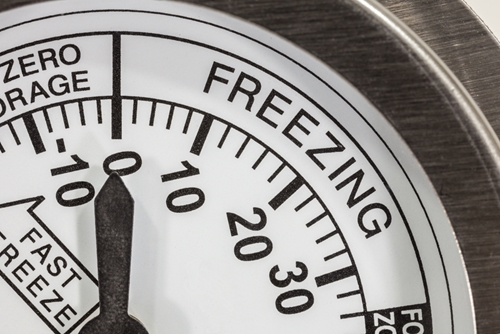Cold stress is a condition that can affect workers who perform jobs in cold environments. A broad spectrum of workers may find themselves at risk for cold stress, and not just those in roles synonymous with exposure to the cold. Sanitation workers, first responders, crossing guards, grocers and agricultural workers are just a sample of the professional population who face the possibility of cold stress during work each day.
Overseeing professionals in roles involving some risk of cold stress means staying informed and aware of this serious condition. Read on to discover helpful information regarding cold stress and learn how you can protect workers.
 Outdoor workers face serious risks when performing their duties in cold climates.
Outdoor workers face serious risks when performing their duties in cold climates.What is cold stress?
Cold stress occurs when temperatures are low and/or wind chill is high, and the body cannot conserve enough heat to maintain a healthy temperature. According to the Occupational Safety and Health Administration, three main conditions of cold stress are:
1. Immersion/trench foot
This condition sets in when feet are exposed to cold and/or moist climates for too long. Notably, immersion isn’t unique to the cold – trench foot can result due solely to moisture in temperatures as high as 60 degrees Fahrenheit. This condition manifests itself through foot blisters, numbness, swelling, and redness. When someone experiences trench foot, perform first aid immediately. The Centers for Disease Control and Prevention recommended removing all footwear, including socks, drying out the skin, and keeping pressure off the feet.
2. Frostbite
Frostbite is a condition in which cold temperatures freeze body tissue, as defined by OSHA. While it often affects workers in freezing conditions, it can impact those in warmer environments with high wind chills. Typically, frostbite occurs in the hands, feet, nose, ears and cheeks. According to the CDC, frostbite symptoms include numbness, slower blood flow to extremities, increasing paleness of the skin, pain, stinging and tingling. When people experience frostbite, bring them to a warm environment immediately. Submerge frostbite-affected body parts in warm water or warm them with body heat. The CDC warned never to massage a frostbitten area, as this could exacerbate the condition. In some cases, frostbite can result in amputation.
3. Hypothermia
The most severe type of cold stress is hypothermia. This condition occurs when an individual’s body temperature, which should be around 98.6 degrees, drops below 95 degrees. At this point, the CDC explained, the body must use any heat it has stored and is not capable of creating more. The source noted this condition presents itself in two stages: Early symptoms may include shivering, confusion, exhaustion and lack of coordination, while later, more serious symptoms can include a lack of shivering, blue skin, dilated pupils, slowed pulse and loss of consciousness. As hypothermia can be fatal, warm victims and provide them with professional medical attention immediately.
“Prioritize worker safety above all else.”
Preventing cold stress in your workplace
Fortunately, cold stress is an entirely preventable condition. Some of the main risk factors for cold stress include improper clothing and footwear, exhaustion, wetness and preexisting health conditions, OSHA noted. Ignoring early symptoms and failing to limit time in low temperatures can also increase a worker’s likelihood of contracting cold stress.
Take the proper precautions against cold stress. The CDC suggested limiting outdoor work in cold weather, or at least scheduling workers for the warmest times of day. Understand your team’s physical capabilities, and don’t push them to exceed those boundaries. Make hot beverages, blankets and other warm weather essentials available to workers at all times.
Additionally, give your staff cold stress training. Provide them with information about the causes, risks and symptoms associated with cold stress.
Share this Post

